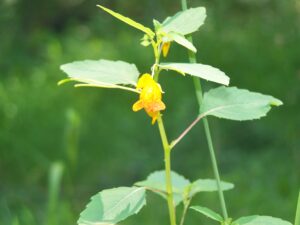The Ramps are Coming!
The Ramps (Allium tricoccum) are coming!! The young Ramp shoots began appearing a couple weeks ago in the Northeast and with all the rain we’ve been having, they are growing in leaps and bounds! If you’re not familiar with Ramps, they are one of the most interesting and popular wild green. A relative of the Wild Onion Grass (Allium vineale) and our cultivated Garlic (Allium sativum), Ramps possess a similar taste profile although often even more pungent.
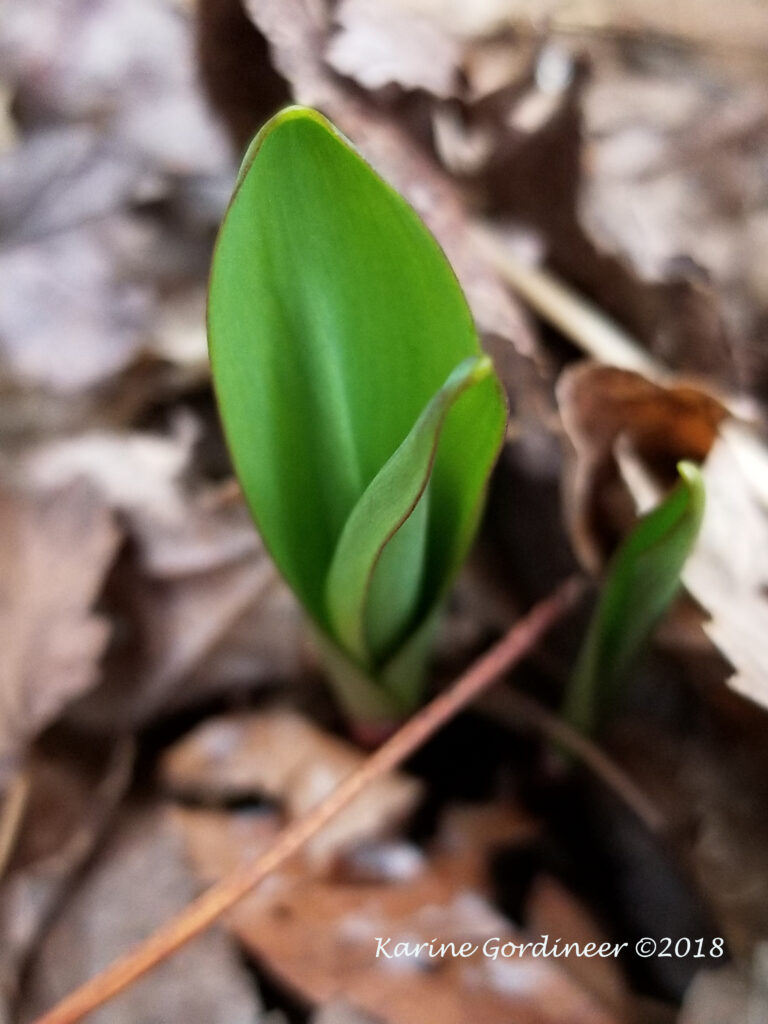
Ramps can be used in every place you would use a Leek, raw in salads, sauteed as a side dish, and in traditional Potato/Leek soups. Ramps appear in early spring with 2 or 3 waxy feeling, leaves that smell strongly of Onion or Garlic when bruised or crushed. They have a white, underground Leek-like bulb. I love the unique and fresh taste of wild foods and this one is a favorite for sure! But before you get to harvesting, there are a number of things to keep in mind. Continue reading for important information you won’t want to miss!
The most important thing to know above all, is the correct identification. This is true for any wild harvesting but even more so for Ramps as it has been mistaken for one of the deadliest plants in North America, American Hellebore (Veratrum viride). I personally think the two plants look vastly different, but I have encountered people who have mistaken the young American Hellebore (and even older plants) for Ramps. Below is a photo of American Hellebore. You can see the leaves are ovate with entire leaf margins. The leaves are deeply pleated and arranged spirally on stiff stems. Ramps on the other hand, have only 2 (and occasionally 3) leaves per plant, the leaves are rubbery in texture and smell strongly of Onions. Getting to know the 2 plants very well is of crucial importance before harvesting.
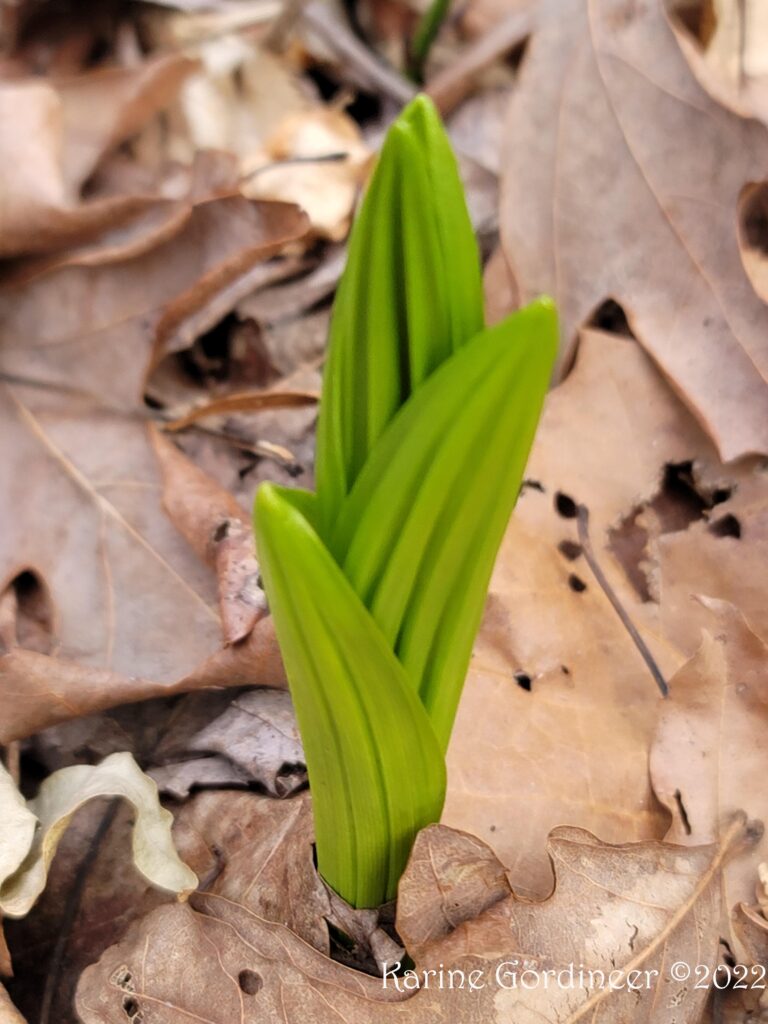
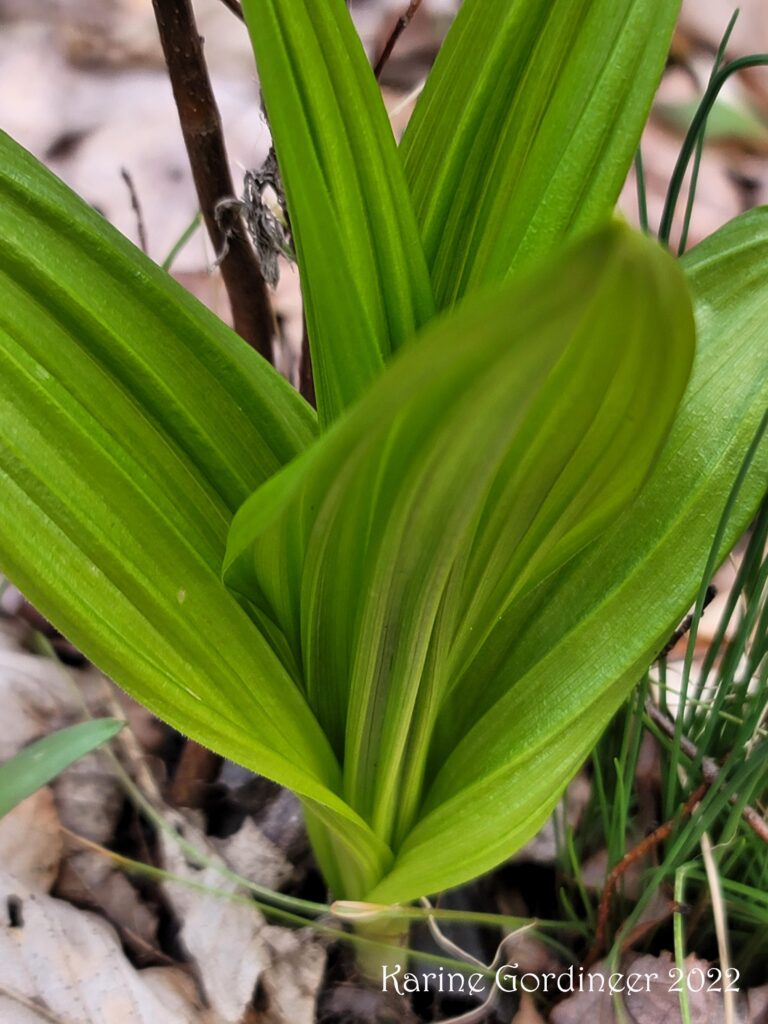
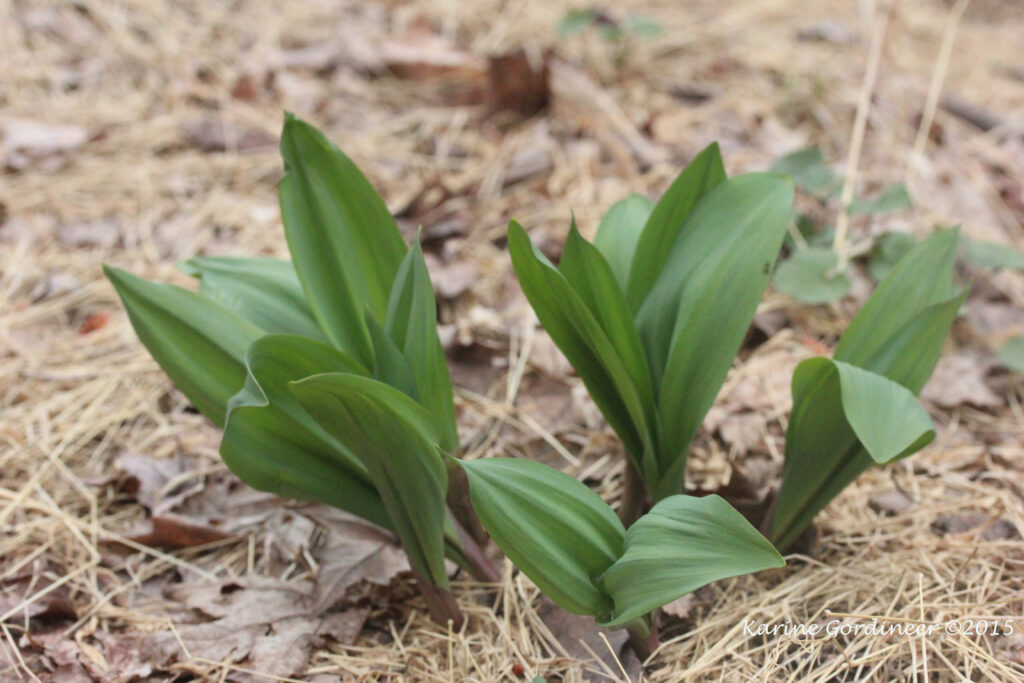
Ramps were once an important Pioneer food in Spring. After having lived off food stores all winter, these lively greens would be a welcome fresh and choice edible and large festivals held over days of harvesting and preparing various Ramp dishes. Even today in the South, Ramp festivals are often held throughout the Spring months.
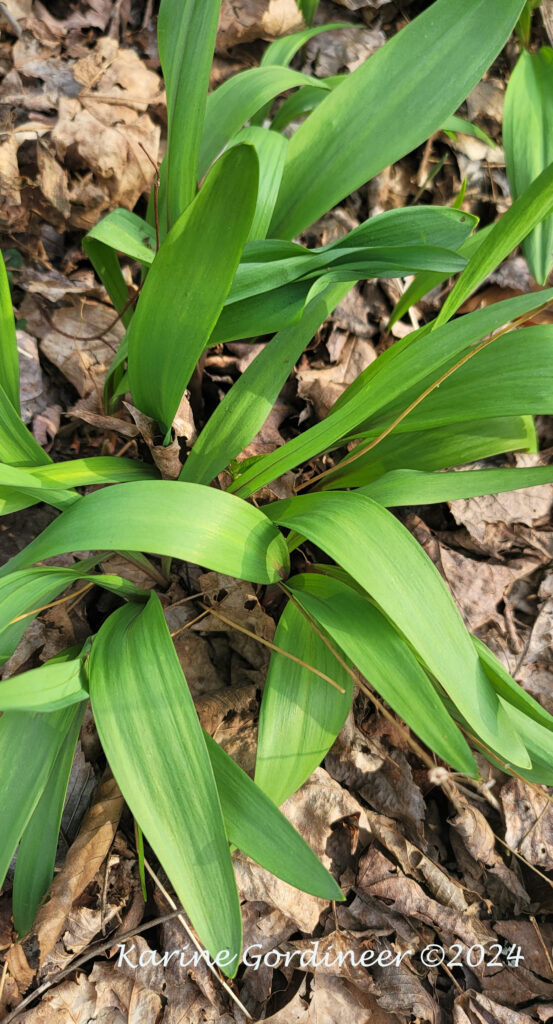
Ramps also possess medicinal properties related to the cardiovascular system and can be naturally lowering to blood pressure and cholesterol levels. Like many herbs in the Allium genus, they aid in increasing circulation to the heart and are beneficial to overall cardiovascular health. They have antibacterial, antifungal, and antibiotic properties killing certain pathogens directly, as well as increasing the activity of the immune system. They help to balance the intestinal flora aiding in improved digestive function. Native tribes would use the juice from the bulb for earaches.
The sustainable harvesting of Ramps are of vital importance. Given this wild green’s popularity, whole stands are often wiped out in a single season which is a travesty and completely unnecessary. Never harvest an entire stand or even 50% which is way too much. If you harvest 50% and then the next person that comes along does the same thing, soon they will all be gone. First off, you should always harvest only what you actually need spreading your harvesting around so that it’s not concentrated in any one area. One way to harvest Ramps sustainably is to never harvest the bulbs. Given that Ramps are a very slow growing perennial, often taking up to 7 years to reach maturity, harvesting the bulbs puts a tremendous strain on wild populations making it difficult for them to rebound. Given that the leaves are quite pungent, harvesting only the leaves, and only 1 leaf per plant will help to ensure the survival of this native species. Spreading your harvesting around amongst patches is another way to not put too much strain on one group of plants. Make sure to follow the life cycle of this plant to be sure to plant the seeds in the Fall.
Another one of the best ways to harvest Ramps sustainably is to grow your own patch! You’ll have the joy of watching these lovely plants growing nearby and the satisfaction of knowing you’re helping to protect a native species. A win win all the way around!

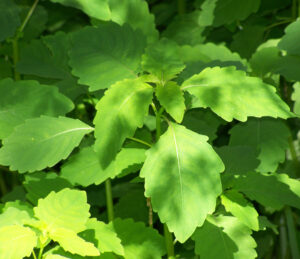
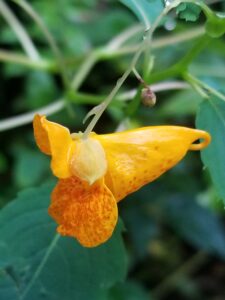 Enter Jewelweed! One of the best remedies I know of to combat this summertime trickster. Jewelweed (Impatiens capensis) is an annual member of the Balsaminaceae or Touch-Me-Not Family. In fact, one of Jewelweed’s common names is “touch-me-not” due to the spring like action of the seed pods when touched that will send seeds flying in all directions much to the delight of children and young at heart adults. Jewelweed grows in areas with good water sources, close to streams, ponds, and flood plains. It grows to heights of 3 to 5 feet with serrated, oval shaped leaves appearing opposite lower on the stem and alternate towards the top. The stems have large leaf nodes where much of the juicy anti itching compounds reside. Depending upon where the plant is located, you will find the irregular orange or yellow flowers any time between June and September. The active parts of the plant are the leaves, stems, and nodes that are best used before the plant flowers.
Enter Jewelweed! One of the best remedies I know of to combat this summertime trickster. Jewelweed (Impatiens capensis) is an annual member of the Balsaminaceae or Touch-Me-Not Family. In fact, one of Jewelweed’s common names is “touch-me-not” due to the spring like action of the seed pods when touched that will send seeds flying in all directions much to the delight of children and young at heart adults. Jewelweed grows in areas with good water sources, close to streams, ponds, and flood plains. It grows to heights of 3 to 5 feet with serrated, oval shaped leaves appearing opposite lower on the stem and alternate towards the top. The stems have large leaf nodes where much of the juicy anti itching compounds reside. Depending upon where the plant is located, you will find the irregular orange or yellow flowers any time between June and September. The active parts of the plant are the leaves, stems, and nodes that are best used before the plant flowers.